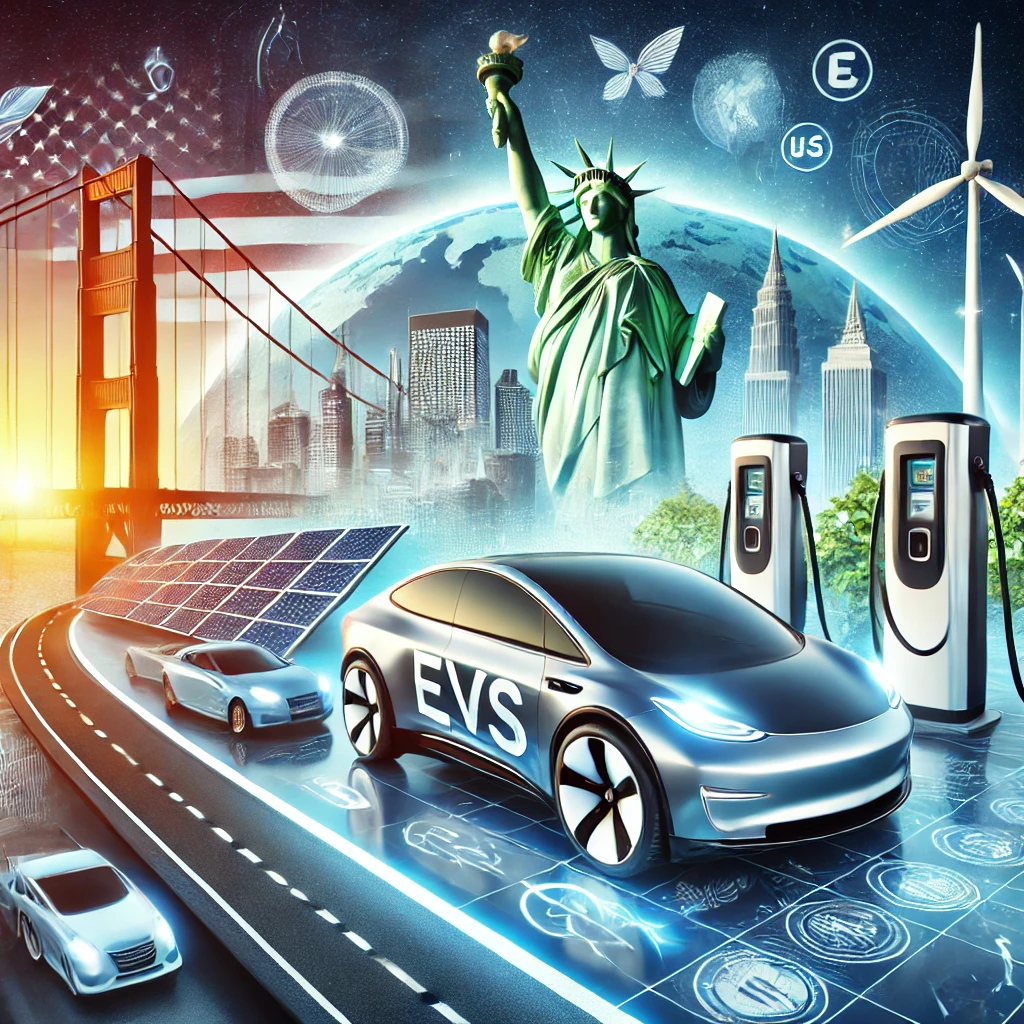Electric vehicles (EVs) are no longer a niche market. In the United States, EVs are quickly becoming the future of transportation, driven by advancements in technology, growing consumer demand, and an increasing focus on environmental sustainability. This blog explores the current trends, challenges, and future of EVs in the U.S.

The Rise of EVs in the U.S.
The shift toward electric vehicles has been gaining momentum over the past decade, with major automakers like Tesla, Ford, General Motors, and Rivian leading the charge in innovation. As of 2023, EVs account for about 7-10% of new vehicle sales in the U.S., a number that is expected to grow significantly as more models hit the market and infrastructure improves.
Key Factors Driving EV Adoption:
- Environmental Awareness: Growing concerns over climate change and carbon emissions have fueled the demand for cleaner transportation options. EVs produce zero tailpipe emissions, making them an attractive option for eco-conscious consumers.
- Government Incentives: The U.S. government has been instrumental in promoting EV adoption through federal tax credits, rebates, and grants. The recent Inflation Reduction Act, which includes billions in investments for green energy, is set to further boost EV production and adoption.
- Technological Advancements: Innovations in battery technology, charging infrastructure, and autonomous driving features are making EVs more accessible and convenient for everyday use. The cost of EV batteries has dropped significantly, bringing down the overall cost of vehicles and extending driving ranges.
Challenges Facing the EV Market
While the future of EVs in the U.S. looks promising, there are still several hurdles that must be overcome for widespread adoption.
Key Challenges:
- Charging Infrastructure: One of the main barriers to EV adoption is the lack of a comprehensive charging network. While cities like Los Angeles, New York, and San Francisco have made significant strides, rural and suburban areas still lack the necessary infrastructure to support large-scale EV use. The Biden administration has committed to building 500,000 public chargers nationwide by 2030, which will be critical to overcoming this hurdle.
- Range Anxiety: Despite improvements in battery technology, range anxiety— the fear that an EV will run out of power before reaching a charging station—remains a concern for many potential buyers. Automakers are working to extend driving ranges, with some models already achieving over 300 miles on a single charge.
- Supply Chain Disruptions: The global semiconductor shortage and disruptions in the supply chain have slowed down EV production in the U.S. Automakers are also competing for key materials like lithium, cobalt, and nickel, which are essential for battery production.
The Future of EVs in the U.S.
Despite these challenges, the future of electric vehicles in the United States is bright. The country is on track to become a leader in the global EV market, with significant investments from both the public and private sectors driving growth and innovation.
Opportunities for Growth:
- Economic Growth: The EV industry has the potential to create thousands of jobs in manufacturing, infrastructure development, and research. Companies like Tesla, Rivian, and Lucid Motors are not only producing vehicles but also building massive factories, creating jobs in states like Texas, California, and Michigan.
- Energy Independence: As EV adoption increases, the U.S. can reduce its reliance on foreign oil and move toward greater energy independence. The shift to electric transportation is aligned with the nation’s broader goals of developing clean energy alternatives like wind, solar, and nuclear power.
- Autonomous Vehicles: The future of EVs is closely tied to advancements in autonomous driving technology. Companies like Waymo and Cruise are testing self-driving electric cars, which could revolutionize transportation by improving safety, reducing traffic, and providing greater mobility for people with disabilities.
Consumer Trends and Attitudes
Consumer attitudes toward EVs are also evolving. While initial adoption was largely driven by early adopters and eco-conscious consumers, EVs are now being embraced by mainstream buyers. Surveys show that many Americans are considering switching to EVs due to lower long-term ownership costs, as electricity is cheaper than gasoline, and maintenance is often less expensive.
Changing Consumer Preferences:
- Affordable Models: As prices come down, more affordable EV models are hitting the market. Cars like the Chevrolet Bolt, Nissan Leaf, and upcoming electric Ford F-150 have made EVs more accessible to a wider range of consumers.
- Luxury and Performance: EVs are not just for eco-conscious buyers. Luxury electric vehicles from brands like Porsche, Mercedes-Benz, and Audi are proving that EVs can deliver high performance, speed, and cutting-edge design.
Conclusion: The Road Ahead
The future of electric vehicles in the U.S. is full of promise. As the technology continues to evolve, and with strong governmental support, the U.S. is well-positioned to lead the world in electric transportation. Over the next decade, we can expect EVs to become a common sight on American roads, revolutionizing the way we travel, reducing our carbon footprint, and reshaping the automotive industry.
As the U.S. accelerates its push toward a sustainable, electric future, the question isn’t if EVs will dominate, but when.
Leave a Reply